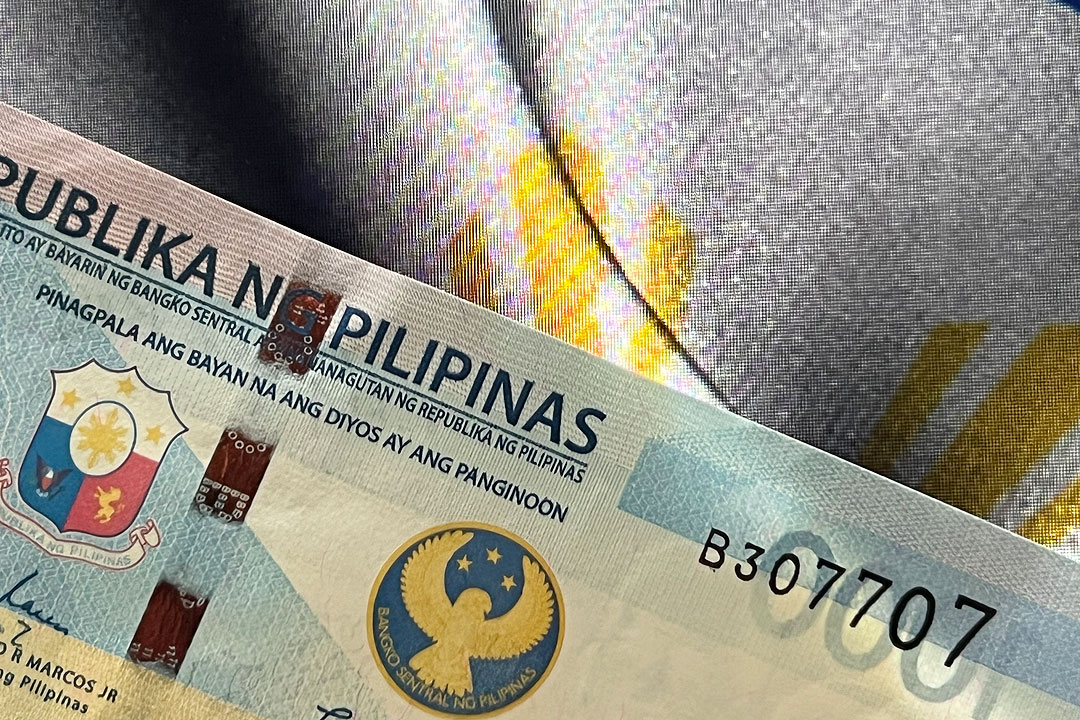BSP may match Fed rate cuts to help prevent peso volatility

THE BANGKO SENTRAL ng Pilipinas (BSP) will likely cut benchmark interest rates starting June this year right after the US Federal Reserve starts its own policy easing cycle to help prevent peso volatility.
HSBC economist for ASEAN (Association of Southeast Asian Nations) Aris D. Dacanay said the inflation outlook in the Philippines is better in 2024 compared with previous years, which gives the BSP room to start cutting borrowing costs.
“Of course, there’s a limit to that, and that limit is the Fed. We don’t think the BSP will be able to cut ahead of the Fed, mainly because our current account deficit is still pretty wide,” Mr. Dacanay told reporters on Wednesday.
He said since the Philippine economy is still sensitive to volatility in the peso, the BSP should ease alongside the Fed to support the local currency against the dollar.
The US Federal Reserve may ease policy rates by 25 basis points (bp) in June and cut by a total of 75 to 100 bps this year, he said, which means the BSP could also reduce borrowing costs by the same amount.
“If the BSP cuts ahead of the Fed, that would lead to depreciation pressures. So that would lead to a weaker peso. If it doesn’t cut, it’s going to lead to a stronger peso. But I think if it cuts in line with the Fed, it limits the volatility, which is the more important aspect,” Mr. Dacanay said.
He noted that the BSP needs to maintain at least a 100-bp interest rate differential with the US central bank.
The Monetary Board hiked benchmark interest rates by 450 bps from May 2022 to October 2023 to help tame elevated inflation. This brought the policy rate to 6.5%, the highest in 16 years.
Meanwhile, the Fed hiked borrowing costs by a cumulative 525 bps from March 2022 to July 2023, bringing its target rate to 5.25-5.5%.
However, there are still risks to domestic inflation, especially amid the rising protectionism of rice and trade barriers of rice exports globally, Mr. Dacanay said.
“With rice prices the highest ever since a food crisis year, this elevated global rice prices will put a floor under how much inflation can actually moderate in the Philippines,” he said.
“We do think inflation will stay within the BSP’s 2-4% target band, except for the second quarter because of base effects. But once that wears off, it will return to 3%. But we don’t think it will fall below 3% given that global rice prices are elevated,” Mr. Dacanay added.
Headline inflation slowed to 3.9% in December from 4.1% in November and 8.1% in the same month a year ago, the Philippine Statistics Authority reported last week.
This marked the first time the consumer price index (CPI) settled within the central bank’s 2-4% target and was the slowest in 22 months or since the 3% reading in February 2022.
However, for 2023, inflation averaged 6%, faster than 5.8% in 2022 and marking the second straight year that the CPI exceeded the BSP’s 2-4% target.
Rice inflation also accelerated to 19.6% in December from 15.8% in November. This was the highest print since the 22.9% recorded in March 2009.
Meanwhile, HSBC sees the peso depreciating to P56 to P57 per dollar in the coming months, as the support from holiday inflows dissipate, Mr. Dacanay said.
A weaker peso can also cause inflation to rise again this year, he said.
“That’s the reason why the BSP needs to be in lockstep with the Fed, to basically keep it at that range. It’s not so matter about the level of the peso, but it’s more about the volatility,” he added.
The BSP will hold its first policy review this year on Feb. 15. — Keisha B. Ta-asan



